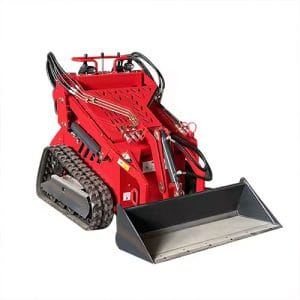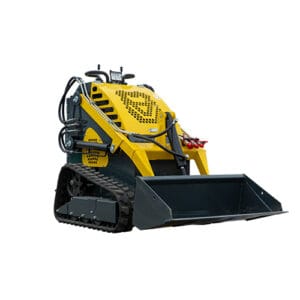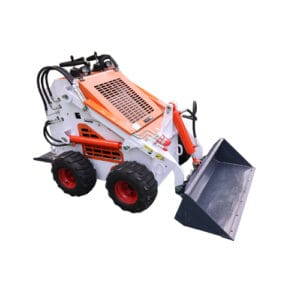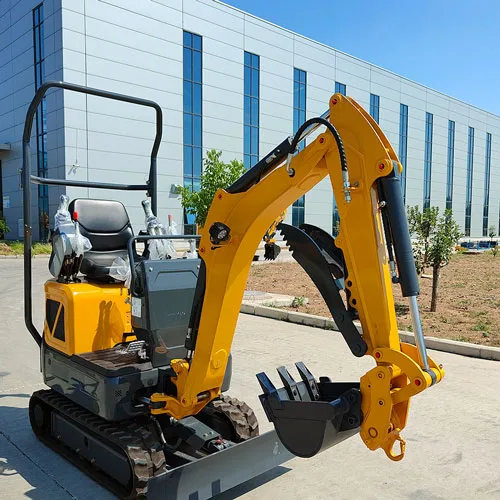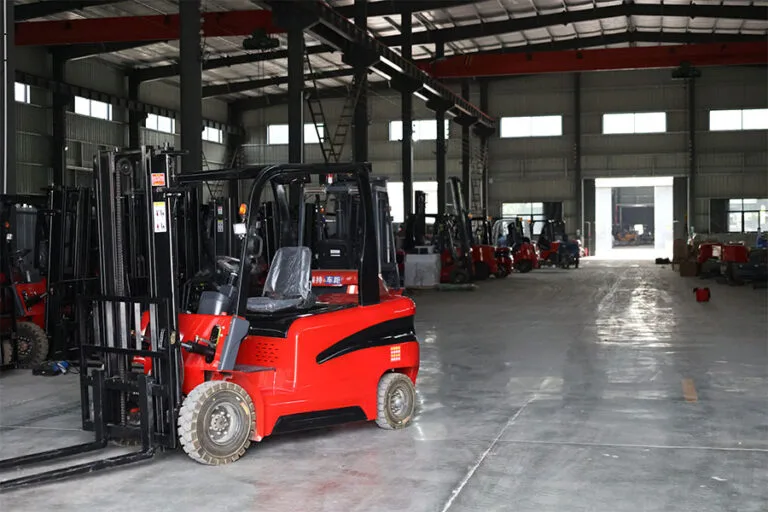Welcome to My Blog!
I’m thrilled to have you here! Before we dive into the content, let’s stay connected. Join me on my social media platforms for more insights, community engagement, and regular updates. Here’s where you can find me:
📌 Facebook: Shandong Huaying International Trade Co., Ltd.
Now, let’s embark on this journey together. I hope you find the content here not only insightful and engaging but also valuable to your interests. Let’s learn, grow, and connect!
Table of Contents
Introduction


Skid steer loaders have become indispensable workhorses across construction sites, agricultural operations, and landscaping projects worldwide. Their compact size, impressive power-to-weight ratio, and remarkable versatility make them ideal for material handling tasks in confined spaces where larger equipment simply can’t operate. However, achieving truly efficient and safe skid steer loading operations requires more than just basic machine operation skills—it demands a deep understanding of three fundamental factors that separate mediocre performance from exceptional productivity.
This comprehensive guide will explore these three critical elements in detail: precision loading techniques, strategic attachment selection, and comprehensive maintenance practices. Whether you’re a novice operator just learning the ropes or a seasoned professional looking to refine your skills, mastering these principles will dramatically improve your loading efficiency, reduce equipment wear and tear, and enhance overall jobsite safety. We’ll provide actionable insights, real-world examples, and expert recommendations to help you optimize every aspect of your skid steer loading operations.
NO 1. Mastering Precision Loading Techniques
The difference between average and exceptional skid steer loading performance often comes down to the operator’s technique. Proper loading methodology not only increases productivity but also extends equipment life and prevents costly accidents.
Optimal Machine Positioning and Approach
The foundation of efficient loading begins before the bucket even touches the material pile. Experienced operators know that approach angle and machine positioning significantly impact loading efficiency:
- Angled Approach (10-15 degrees): Approaching the pile straight-on creates unnecessary stress on the loader arms and hydraulic system. Instead, position the machine at a slight angle to distribute forces more evenly across the bucket’s cutting edge.
- Controlled Speed: Maintain a steady, moderate speed when approaching the pile. Rapid acceleration wastes fuel and can cause material spillage, while moving too slowly reduces productivity.
- Bucket Height Adjustment: Keep the bucket approximately 6-12 inches off the ground when traveling to the pile. This “sweet spot” provides optimal visibility while maintaining stability.
Advanced Bucket Control Methods
Once positioned correctly, refined bucket control separates professional operators from amateurs:
- Penetration Technique: As the bucket enters the pile, slightly curl it downward to maximize material penetration. This “digging in” motion ensures a full bucket with minimal passes.
- Lift and Curl Coordination: Begin lifting the loader arms while simultaneously curling the bucket backward. This synchronized motion maintains material in the bucket while reducing spillage.
- Load Securing: Once loaded, continue curling the bucket slightly past vertical to create a “lip” that prevents material from falling out during transport.
Specialized Loading Scenarios
Different materials require tailored loading approaches:
- Loose Materials (Sand, Gravel): Use a wider bucket and employ a “scooping” motion rather than digging to prevent overloading.
- Dense Materials (Clay, Packed Dirt): Make multiple shallow passes rather than forcing one deep scoop to avoid excessive strain on hydraulic components.
- Mixed Debris (Demolition Sites): Rock buckets with spaced tines allow for better material separation and screening during loading.
NO 2. Strategic Attachment Selection for Maximum Efficiency
The versatility of skid steers largely stems from their ability to utilize various attachments. Choosing the right tool for specific loading tasks can dramatically improve productivity and reduce operator fatigue.
Comprehensive Attachment Comparison
The following table outlines optimal attachments for various loading applications:
| Material Type | Recommended Attachment | Capacity Increase | Special Features |
|---|---|---|---|
| Loose Soil/Gravel | High Capacity Bucket (74″+) | 35-50% | Extended reach, reinforced cutting edge |
| Demolition Debris | Rock Bucket with Replaceable Teeth | 25-40% | Material screening, heavy-duty construction |
| Snow Removal | Push Box with Adjustable Angle | 50-75% | Side wings for containment, poly liner |
| Agricultural Products | Forks with Side Shift | 20-30% | Precision placement, adjustable width |
| Industrial Materials | Clamshell Bucket | 15-25% | Secure containment, controlled dumping |
Advanced Attachment Features
Modern attachments incorporate innovative features that enhance skid steer loading performance. Quick-attach systems allow operators to switch tools in under 30 seconds, significantly reducing downtime between different skid steer loading tasks. Load monitoring technology is now integrated into some premium buckets, providing real-time weight measurements to prevent overloading during skid steer loading operations. Enhanced visibility designs, such as cutaway sections and strategic window placements, improve operator visibility for precise skid steer loading tasks.
Attachment Maintenance Considerations
Proper care of attachments is essential to maintain optimal skid steer loading performance. Daily inspection should be conducted to check for cracks, worn cutting edges, and loose components. Proper storage on level surfaces with protective covers prevents weather damage that could affect skid steer loading efficiency. Regular sharpening of cutting edges reduces skid steer loading resistance and improves overall performance.
NO 3. Comprehensive Maintenance for Peak Performance


A well-maintained skid steer loader is the foundation of efficient skid steer loading operations. Implementing a thorough maintenance program prevents unexpected breakdowns and ensures consistent skid steer loading performance.
Detailed Maintenance Schedule
Following a structured maintenance schedule helps extend the life of skid steer loaders and enhances skid steer loading efficiency.
| Maintenance Interval | Critical Tasks | Special Considerations |
|---|---|---|
| Every 8-10 Hours | Grease all fittings (14+ points typically) | Use high-temperature lithium-based grease |
| Daily | Check fluid levels, tire pressure, attachments | Document any leaks or abnormal conditions |
| Every 50 Hours | Inspect air filter, clean radiator fins | Compressed air cleaning recommended |
| Every 250 Hours | Change engine oil and filters | Use manufacturer-specified oil viscosity |
| Every 500 Hours | Hydraulic system flush and filter replacement | Consider oil analysis for contamination |
| Annually | Complete machine inspection by certified tech | Check for frame cracks and structural wear |
Advanced Maintenance Techniques
Beyond basic maintenance, additional professional practices enhance skid steer loading efficiency. A fluid analysis program, involving regular oil sampling, detects early signs of component wear before failures occur, ensuring smooth skid steer loading operations. Undercarriage monitoring, especially for tracked models, allows operators to plan for timely replacements and avoid unnecessary skid steer loading downtime. Electrical system diagnostics through periodic scanning of machine computers can identify developing issues in the control systems that may impact skid steer loading performance.
Cold Weather Operation Considerations
Extreme conditions require special maintenance attention to prevent skid steer loading inefficiencies. Block heaters should be installed and used when temperatures drop below freezing to reduce startup wear and maintain skid steer loading efficiency. Hydraulic oil selection should be adjusted to lower viscosity hydraulic fluid in cold climates to maintain proper system operation. Battery maintenance, including insulated battery blankets and proper charge levels, prevents cold-weather failures that could disrupt skid steer loading tasks.
Conclusion
Mastering skid steer loading operations requires a holistic approach that combines refined operating techniques, strategic attachment selection, and disciplined maintenance practices. By implementing the principles outlined in this guide, operators can achieve:
- 30-50% improvements in loading efficiency
- 20-40% reductions in fuel consumption
- Significant decreases in equipment downtime
- Enhanced jobsite safety and reduced accident risks
Remember that consistent practice and attention to detail separate good operators from great ones. Invest time in training, stay current with new attachment technologies, and maintain rigorous maintenance schedules to ensure your skid steer loader delivers maximum productivity throughout its service life.
FAQ
What’s the most common mistake operators make when loading with a skid steer?
The most prevalent error is overloading the bucket, which strains the hydraulic system, reduces stability, and accelerates wear on components. Always respect the machine’s rated operating capacity.
How can I improve visibility during precise loading operations?
Consider upgrading to buckets with visibility enhancements like cutaway sections, or install aftermarket camera systems. Proper seat adjustment and regular mirror/window cleaning also significantly help.
What’s the best way to handle slippery or unstable materials during loading?
For materials like wet clay or snow, reduce bucket capacity by 20-30% and use slower, more controlled movements. Some operators find adding bucket liners or using specialty attachments like snow pushers improves control.
How often should I replace my bucket’s cutting edge?
Depending on usage, replace the cutting edge when wear reaches 50% of its original thickness. For heavy-duty applications, consider using reversible edges to double service life.
Can I use third-party attachments with my skid steer?
While many aftermarket attachments work well, always verify they meet your machine’s hydraulic flow and pressure specifications. Improperly matched attachments can cause performance issues or even damage your equipment.

